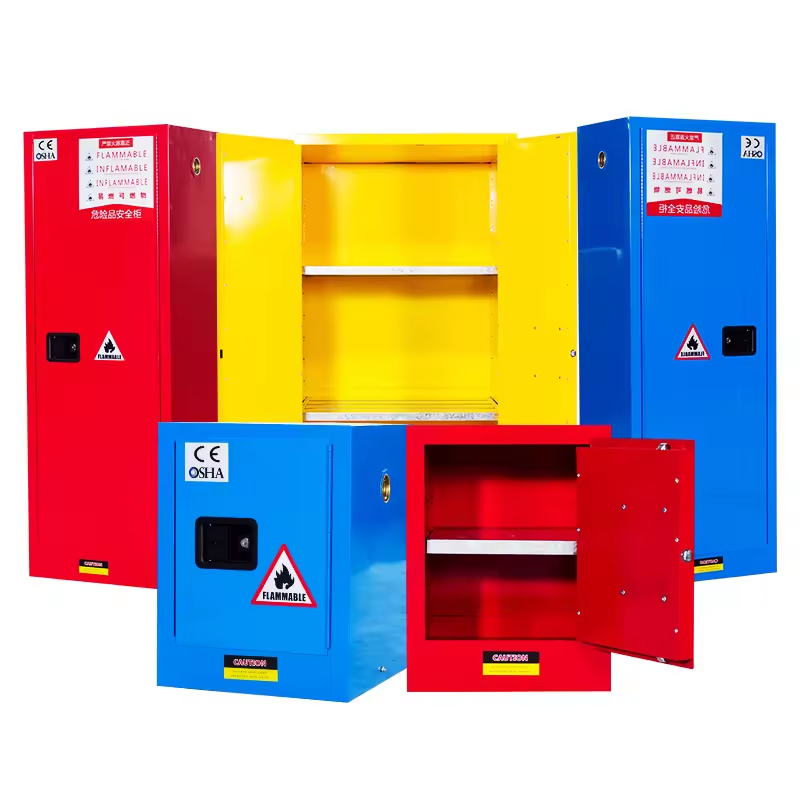Safety Cabinets – Anchor Building Materials Trading LLC
Protect your workplace and meet international safety standards with our premium Safety Cabinets, engineered for the secure storage of flammable liquids, chemicals, and hazardous substances. Manufactured with double-walled steel and equipped with spill containment sumps, these cabinets are designed to comply with OSHA 29 CFR 1910.106 and NFPA Code 30 regulations.
At Anchor Building Materials Trading LLC, we supply safety cabinets trusted by professionals in oilfield operations, MEP sectors, laboratories, and industrial facilities across Dubai and the UAE. Our cabinets come in various sizes and colors (yellow, red, blue) for easy hazard identification and inventory control.
Key Features:
- Fire-resistant double-wall steel construction
- Self-closing doors with secure locking systems
- Adjustable shelves for flexible storage
- Grounding connectors for added safety
- Color-coded finishes for chemical classification
- Available in 30, 45, and 60-gallon capacities
Whether you’re storing solvents, acids, pesticides, or flammable liquids, our safety cabinets help you stay organized, compliant, and protected. Choose Anchor Building Materials Trading LLC for durable, regulation-ready safety storage solutions.


Reviews
There are no reviews yet.